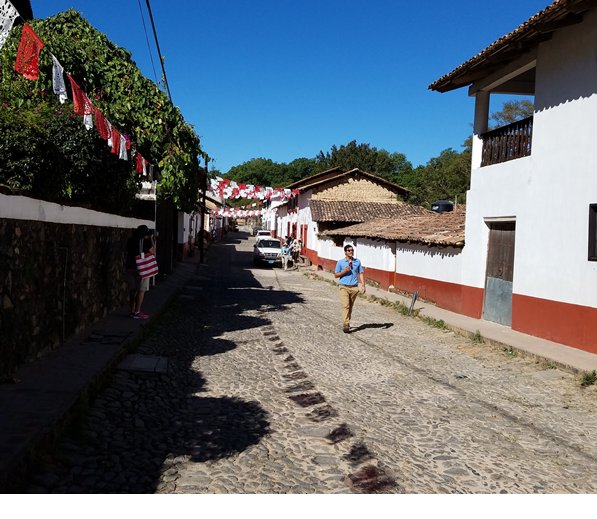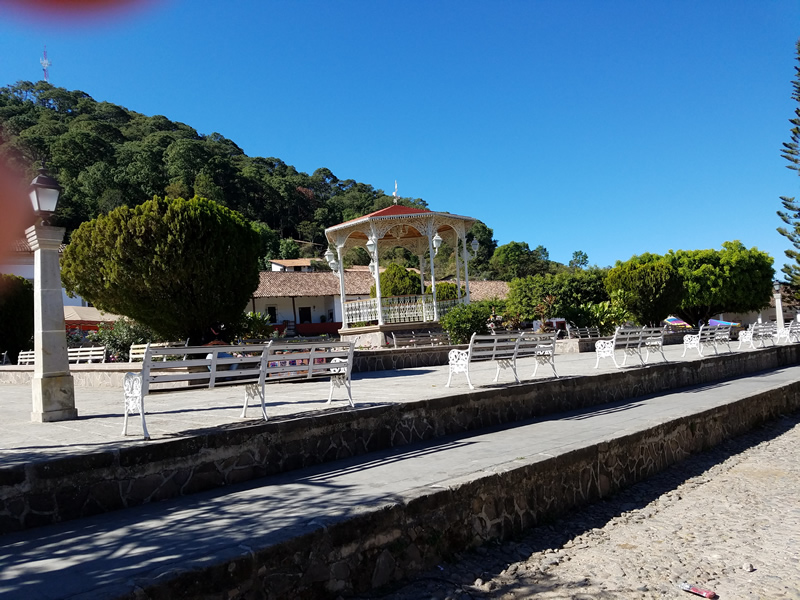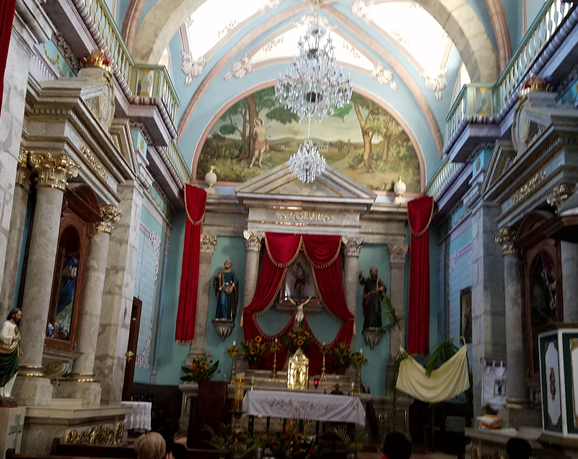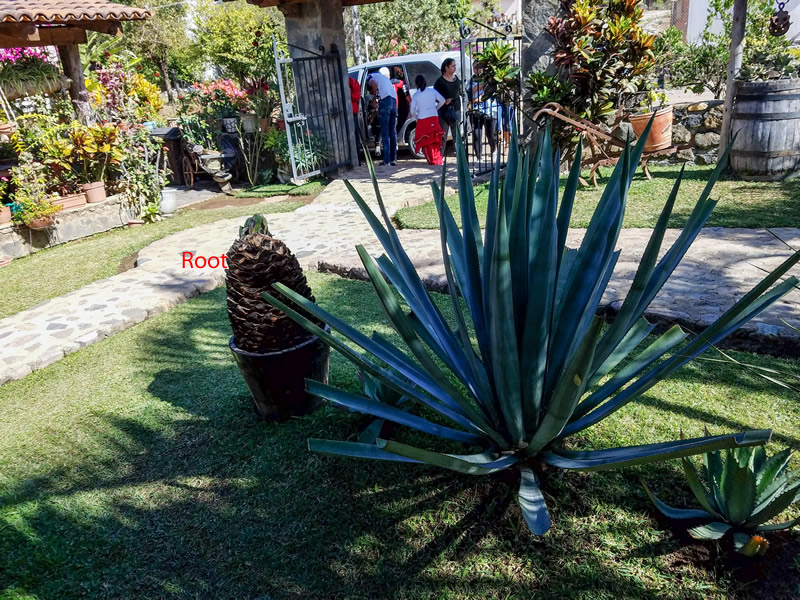Mexico (January 16, 2017)
Puerta Vallarta Mexico! Our greeting this morning, besides the skyscrapers, was smog and the strong odor of burning – it permeated the entire ship. The picture below was taken after we returned and the smog was gone.

According to our tour guide until the 1960s Puerta Vallarta was a small village. However, Richard Burton and Elizabeth Tailor discovered it and uses it as a private love nest. The press eventually found them and Puerta Vallarta became a very "in" place to be. This is still a resort and there are snow birds here as well as expats.
There is a shopping mall and a Walmart within walking distance of the port. I think the goal of at least half the passengers was Walmart to replace items they forgot or just to feel like home. The ships “drug” store is not well stocked, nor inexpensive.
Our tour today took us into the Sierra Madres to San Sebastian. I was never able to locate this small village on a map, but, judging by the sun’s general position as we traveled, besides going up we went northeast. We found out that the name Sierra means saw (object used to cut wood) and Madres is mothers, The mountains are not terribly high where we were – most peaks are about 4 to 5,000 feet. The bus trips there involved much up and 
down and turns, but with great views. A stop on the trip up was just before the “Progress Bridge,” (see picture above) to allow picture taking and the proprietors of the little store hoped, buying something. The bridge name was given because it saves an hour’s trip down into the valley and back up. From looking at the steep “hills,” I could see that pre-bridge it was a rather tortuous trip.
Nestled in the Sierra Madres, San Sebastian is about 4,000 feet in elevation with a great climate. The temperature was in the mid 70s and it was sunny. Previously difficult to reach it still retains much of its character of 250 years earlier. With a few exceptions! Unlike Antigua in Guatemala where their status as a UNESCO site has dictated that all wires be underground San Sebastian has wires everywhere.

The narrow cobblestone roads were designed for walking, not vehicles, which are numerous. Drivers, however, are very considerate, they slow down or stop to allow pedestrians to get out of the way. No horns are ever blown and there is no feeling that the driver is impatient. We saw a bottle neck in which one vehicle very calmly backed up to allow another to come towards him and then make a 270 degrees turn while the car trying to come down that road waited patiently before proceeding.
Sidewalks are narrow, and an afterthought. When the roads were built no one even dreamed of motors let alone motorized vehicles. They are punctuated by things such as a corner of a building jutting out as well as a few window wells. To make life more interesting, sometimes the sidewalk is level while the road drops down with the need for high steps to get down at the next intersection. The town has a laid back feeling and has no street or park vendors.
This week was San Sebastian week when the villagers celebrate, what else? San Sebastian. We were told that he was a Roman soldier in the first century who had been converted to Christianity. To punish him, the Roman soldiers tied him to a tree and threw spears at his ribs, leaving him for dead. His friends untied him and found that he was still alive. They nursed him back to health at which point, despite his friends trying to discourage him, he returned to Rome to proselytize. Despite his exhortations that Christ had saved him, the punishment was repeated, but this time the soldiers made sure that he was dead before they abandoned him, thus making him the first Christian martyr.
San Sebastian has the obligatory village square, complete with a gazebo and many flowers. On one side of the square, behind a long building is the church. 
Unlike the prior cathedrals, it was simple and beautiful, a place that you could think about worshipping instead of all the opulence surrounding you. And the only church in town.

The road to San Sebastian, although mostly paved did have some dirt stretches although it looked like that area would be paved before too long. A truck traverses the dirt areas spewing water, I’m sure to keep the dust down. I don’t know how much water ends up on the road, but the entire side of our bus was sprayed. A few parts of the road were cobblestone… I strongly suspect that with the completion of the Progress Bridge and the improvement of the road there from the port, that the town will eventually not be what we saw, but more commercial.
On the way back to Puerta Vallarta we stopped at a Tequila factory. Surprisingly tequila is not made from the leaves, but from the root, which resembles a pineapple. 
It goes through several boilings and condensations to get the alcohol level down to a level that can be legally sold. The proprietor served us samples of six different kinds of tequila of which I can only remember 4, blue agave a (regarded as the best), green agave, an orange blend (which he maintains makes the best margaritas.) and a chocolate coffee blend. The latter two are quite sweet.
As we were returning to the ship we were treated to an example of Mexican Engineering (the guide’s words not mine) in a pedestrian bridge with access for the disabled on one side, but stairs on the other….
The areas that we saw are more prosperous than any we have previously visited The port area looks very prosperous, touristy, and no doubt expensive, even to gringos. There are city buses, but no chicken buses!
